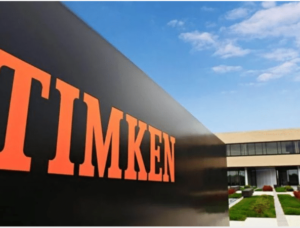
In the realm of industrial machinery and equipment, bearing performance is a critical determinant of efficiency, reliability, and longevity. Rigorous testing helps gauge how bearings respond to various operating conditions, stresses, and demands. Among the reputable players in the bearing market, FAG and TIMKEN have established their presence with a commitment to delivering high-quality products. This article delves into the performance testing of FAG bearings and TIMKEN bearings, conducting a comprehensive comparison of their attributes, advancements, and contributions to the realm of bearing technology.
Precision Engineering and Testing:
FAG bearings are renowned for their precision engineering. Performance testing of FAG bearings often includes evaluating dimensional accuracy, surface finish, and concentricity. These tests ensure that the bearings meet the stringent requirements of applications demanding minimal tolerances, such as aerospace and medical equipment.
TIMKEN bearings also undergo extensive testing, focusing on load distribution, wear resistance, and durability. Their tapered roller design is subjected to dynamic load testing to assess how well the bearings handle variable forces and maintain stability.
High-Speed Performance:
High-speed applications demand bearings that can withstand increased stress, heat, and friction. FAG bearings are subjected to high-speed rotational testing to gauge their ability to maintain stable operation under demanding conditions. This is crucial in applications like machine tool spindles and precision robotics.
TIMKEN bearings’ performance is evaluated in scenarios involving both high speeds and variable loads. Testing assesses how the bearings distribute loads and manage vibrations, ensuring reliable operation even at elevated speeds.
Endurance and Durability:
Both FAG and TIMKEN prioritize the endurance and durability of their bearings. FAG bearings undergo fatigue testing to simulate real-world operational conditions and evaluate their longevity. This testing is particularly relevant in high-stress applications where continuous operation is crucial.
TIMKEN bearings are tested for their ability to endure shock loads, oscillations, and variable forces. Their performance under challenging conditions is critical for industries like construction and heavy machinery.
Temperature and Environment Testing:
Bearings often operate in diverse environments with fluctuating temperatures and varying levels of contamination. FAG bearings are subjected to temperature testing to ensure they can function within specified temperature ranges without compromising performance.
TIMKEN bearings are evaluated for their resilience in harsh environments, including exposure to dust, debris, and moisture. Testing assesses their ability to maintain performance and longevity in challenging conditions.
Advanced Materials and Coatings:
Both brands invest in research and development to enhance bearing materials and coatings. FAG’s advancements include specialized coatings that reduce friction and wear, contributing to improved performance and longevity.
TIMKEN’s focus on advanced materials leads to bearings with enhanced resistance to corrosion, wear, and fatigue. These innovations contribute to the bearings’ ability to perform reliably in demanding environments.
Conclusion:
The rigorous testing of FAG bearings and TIMKEN bearings underscores the commitment of both brands to delivering high-performance solutions. While FAG bearings excel in precision applications and high-speed scenarios, TIMKEN bearings shine in durability and load-handling capacity. Bearing performance testing ensures that these components meet the demands of modern industries and contribute to the seamless operation of machinery across various sectors. The choice between the two should be guided by the specific needs of the application, considering factors like speed, load, environment, and maintenance requirements.
We support more information about Bearings. you can visit https://cmtgbearing.com. or email us info@cmtgbearing.com.


